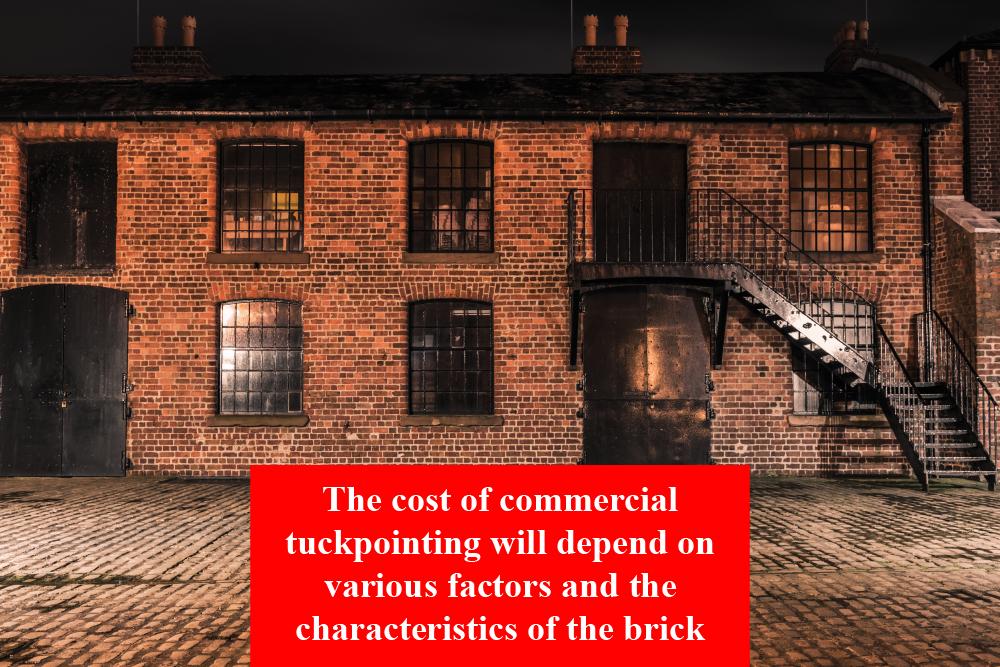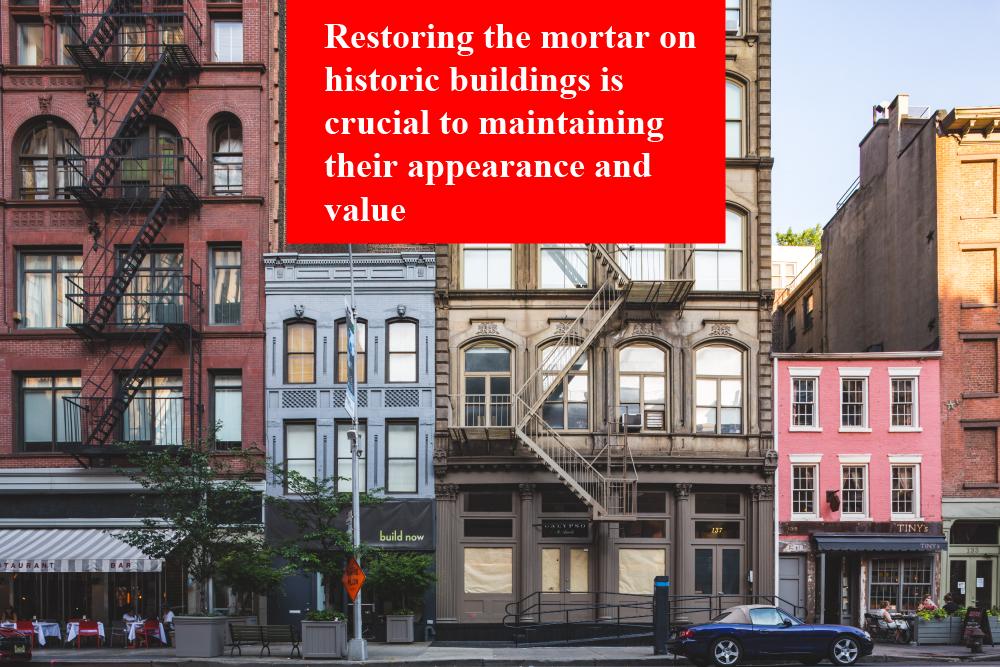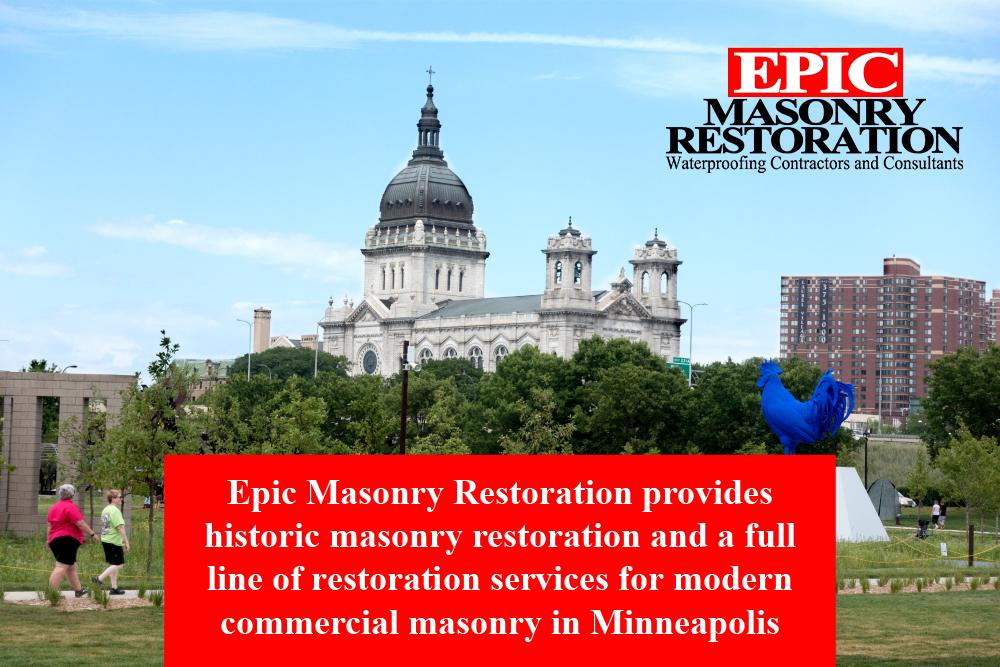The masonry on a commercial building takes a lot of abuse from environmental forces and Old Father Time. Everything from road salts to UV light from the sun can damage the structure of the mortar, weakening it to the point where it starts to break down. Over the years, mortar can become damaged or naturally deteriorate and require repair or replacement.
Is Tuckpointing Necessary?
Signs that Mortar Needs Repair

Mortar joints can start to show signs of wear and damage in as little as 20 years. Here are four major signs commercial masonry needs attention:
- Mortar erosion is 1/4 inch deep or more.
- Crumbling mortar.
- Gaps and cracks along the edges of the bricks and mortar.
- Hairline cracks in the mortar itself.
Cost

The cost of commercial tuckpointing will depend on various factors and the characteristics of the brick. However, the cost of repair is calculated based on the total square footage of the area being repaired, and this calculation will include all the determining factors.
- Cost of construction labor rates in your area.
- The height of the area being repaired as setting up scaffolding adds to the cost.
- Need for additional repairs such as some bricks having to be removed and replaced.
- Weatherproofing.
- Areas around brickwork where moisture can potentially enter the building.
- Intricate and decorative brickwork, especially around corners and joints, can potentially increase labor costs.
- Time of year can affect costs as it is harder for workers to perform the job in cold winter weather.
Other factors that can affect costs are the number of different colored bricks involved and the amount of straight walling.
Differences in Mortar
Whether built with brick or stone, restoring the mortar on historic buildings is crucial to maintaining their appearance and value. Before 1871 nearly every masonry building in the U.S. was built with lime-based mortar. While lime mortar is versatile and easy to work with, it does break down over time and must be repaired or replaced. As manufacturing processes improved, the strength and workability of cement increased in significant ways and became as much as ten times stronger than traditional lime mortar. From the 1870s to the 1920s, cement proportions in the mix grew to replace lime completely.

While these advances have been a boon to new construction, new-formula Portland cement can have a very different appearance and hardness from lime mortar. Because of the differences, it is essential to repair mortar with the proper techniques and materials so historic buildings will retain its original and historic appearance and integrity. Additionally, the masonry unit, i.e., brick or stone, must be harder than the mortar that holds it together, or the mortar can end up damaging the masonry.
Older bricks are softer than newer bricks, and Portland-type cement is too hard for most historic masonry. Because the bricks on historic buildings are more fragile than modern bricks, historic brick can be destroyed by hard mortar. This causes the bricks to crack and “spall,” a condition where the surface of the bricks flakes off and turns to powder. To archive the same look as old mortar, the cement formula must be matched through a mortar analysis, if possible, to get the same mix that was used originally. If a mortar analysis is not feasible, it is always best to error on the side of caution and uses lime mortar, so the new mortar isn’t too hard for the old brick.
How Often Should Tuckpointing be Applied to a Building?
Because of its fragile nature, historic commercial masonry should typically be tuckpointed every 20 to 30 years, depending on the climate where the building is located. Areas that experience heavy rain with high humidity and severe freeze and thaw cycles will need more frequent repairs than buildings in drier and more stable climates. This is because older lime-based mortar breaks down faster when exposed to harsh weather. However, with buildings with significant historic value, it is worth the investment to tuckpoint the masonry more often to maintain its value as failure of a historic brick structure will cost significantly more to rebuild. If you are not sure, consult a professional to see if your masonry requires attention.
Can You Repair Your Own Masonry Without Tuckpointing?
It is crucial that repairs be completed by knowledgeable and experienced in commercial tuckpointing, historic masonry repair, and has the professional equipment needed to achieve the best result for your historic building. This is especially true if the building holds landmark status or has other significant historical value.
Due to the many varying factors and because there is often more than just financial value at stake, historic building masonry requires regular professional servicing to maintain both its functional safety and aesthetic appeal. While many contractors perform masonry work, it is crucial to hire someone with the proper experience and expertise to perform historic repairs.
Epic Masonry Restoration provides historic masonry restoration and a full line of restoration services for modern commercial masonry in Minneapolis and the greater metro area. At Epic we take great pride in providing services that maintain the integrity and historical value of your building. To help you avoid expensive future repair costs and significantly extend the service life of your property, give us a call today at 612-353-4646.

